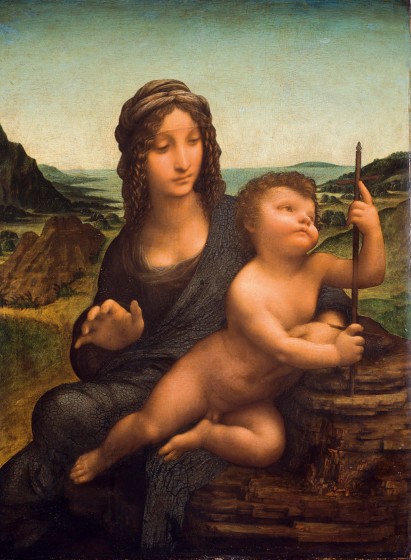On November 9, 2011, one of the most impressive and possibly popular museum exhibitions, “Leonardo da Vinci: Painter at the Court of Milan”, opened at the National Gallery in London. Pre-booked tickets for the exhibition had been on sale since mid-summer, and the figures for these were very strong. The press release for the exhibition claimed that it would be “unprecedented” as it was uniting works of art never before seen in the U.K., and, in some cases, pictures that had never been together in the history of their creation. What set this exhibition apart from all previous exhibitions devoted to this most famous Italian Renaissance artist was not only the content of the show, but also the objective, which was to explore da Vinci’s aims and techniques as a painter. Such an exhibition is the result of many years of planning, organization—including complicated negotiations between the National Gallery and the numerous public and private lenders—and complex financial arrangements that would make any accountant dizzy. It is for this reason that such grand exhibitions as this happen increasingly less often in the international art world.
The “Leonardo” exhibition was monographic, meaning that it focused on the work of a single artist. And while it did include a number of works by other artists, such as those by some of his followers, the concentration of the show was on the master himself. In Italy especially, it is not uncommon for museums to host “monographic” exhibitions that may only have a handful of works by the main artist and many, many more by related (and sometimes unrelated) artists. Such an exhibition can be of academic interest, but it can also leave visitors disappointed by the seemingly anemic content. The purpose of such an exhibition, and a misleading title, can often be attributed to greed. By advertising an exhibition as being about Giotto, for example, museums are far more likely to draw in paying customers than if they were to reveal that the true focus of their exhibition was early 14th-century art by anonymous artists. (Of course, to really put together an exhibition focused on Giotto would be near impossible, given that much of the muralist’s work exists as part of the fabric of buildings.)
Leonardo da Vinci, Study of a man with his head turned, 1495, red chalk on red prepared paper, 7.1 x 5.9 inches. Photo: Lent by Her Majesty the Queen (RL 12547). The Royal Collection ©2011., Her Majesty Queen Elizabeth.
The practical matters behind a monographic exhibition are significant, effected not only by the material forms of the works of art, but also by their locations, size, and in the case of older art, fragility. Additionally, the availability of art that a curator might dream of including is an extremely important factor. Whether a museum, such as the Louvre or the Hermitage in the case of “Leonardo”, is willing to lend one of their most important works to another institution often depends on the personal relationships of the various curators and museum directors involved. While such an arrangement is rarely a quid pro quo situation, much negotiation goes into such a deal. Special attention is paid to how a work of art is transported (with special arrangements made for the curator accompanying the work from the lending institution), and whether or not the borrowing museum might provide some much-needed restoration or a new frame. As the insurance needs become more complicated and the costs of such arrangements more expensive, museums are understandably less inclined to initiate such exhibitions.
An alternative that has been embraced recently by many international museums is to design exhibitions that showcase works from their own collections, by focusing in on one masterpiece or on a single concept, such as in the National Gallery’s very popular “Devotion by Design: Italian Altarpieces before 1500” from the summer of 2011. In the case of a recent exhibition at the Vancouver Art Gallery, “The Colour of My Dreams: The Surrealist Revolution in Art”, the curators very cleverly avoided putting on a monographic exhibition, and instead created a show that drew many smaller, although equally important, works of art from mostly North American institutions. In addition, the curators capitalized on their significant exhibition space by including non-traditional works of art such as movie shorts, creating, in effect, a context for the art on display.
Sadly, the days for monographic exhibitions such as “Leonardo” are numbered. However, necessity is the mother of invention, and in these lean economic times, museums will be inspired to design exhibitions within new parameters, allowing for fresh insights that delight the public just as well.
